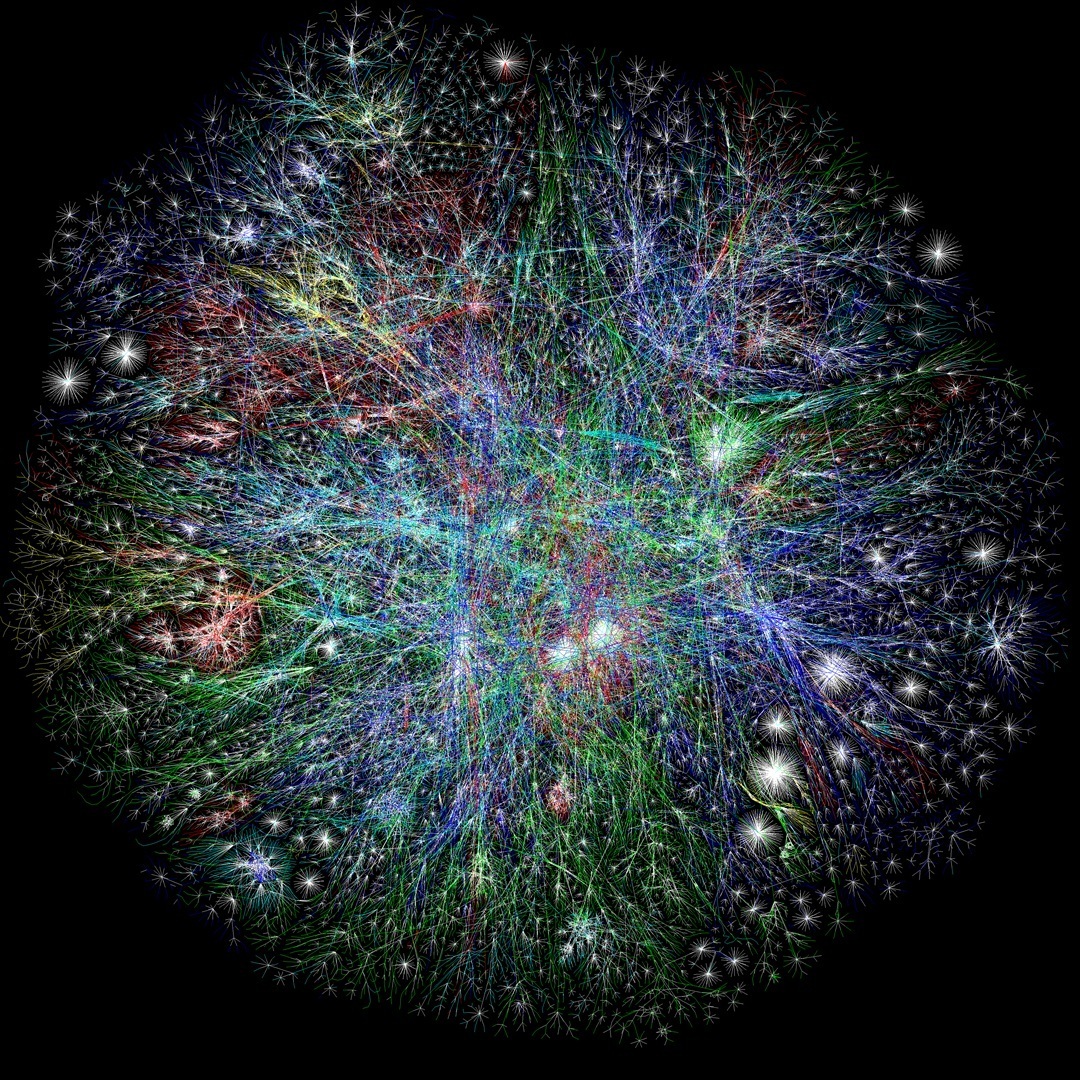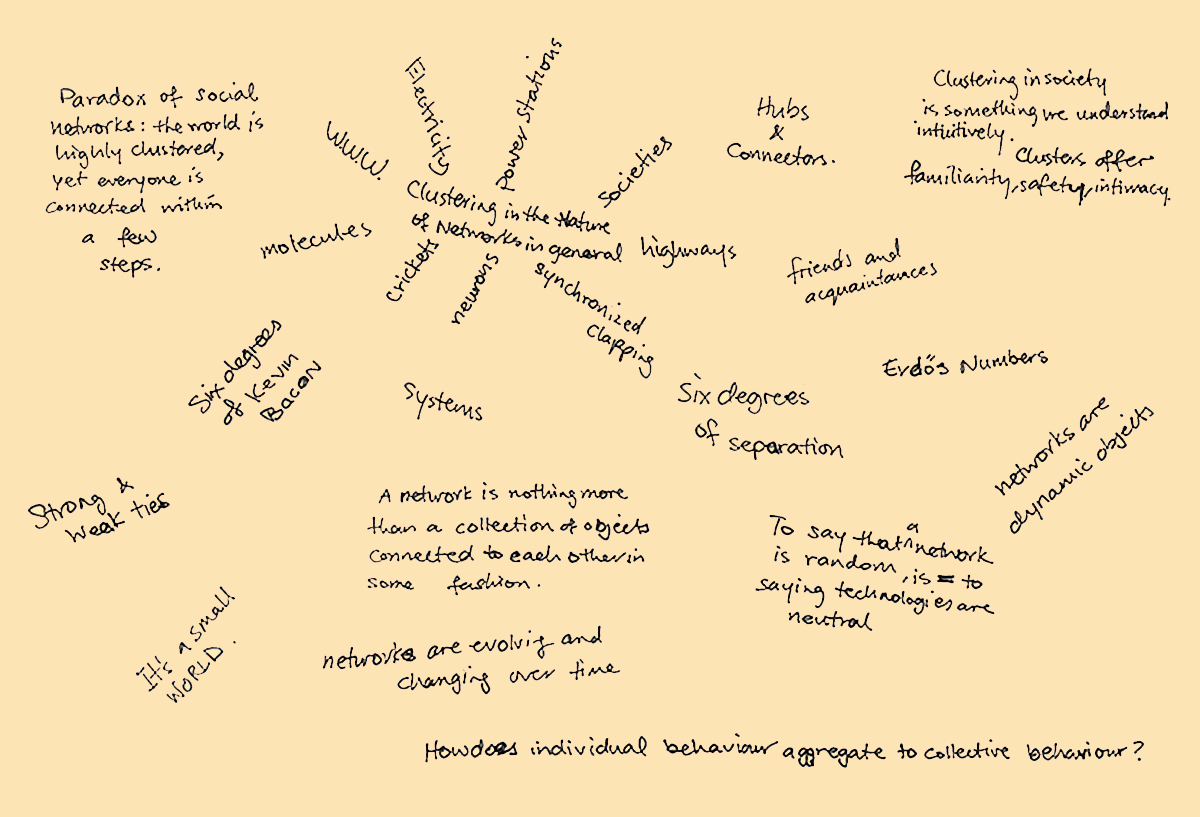Notes based on Week 9: Reading and Symposium
Pareto’s Law: The 80/20 Rule
Observation of economic inequalities: In most cases four-fifths of our efforts are largely irrelevant.
- 80% land owned by 20% of population
- 80% profit produced by 20% employees
- 80% crime commited by 20% criminals
- 80% web links link to 15% webpages
- 80% citations go to 38% scientists
Bell curves:
- pattern in most quantities in nature , with a peak distribution and very few on the extremes ends.
- A signature of random networks.
- Disorder
Power laws:
- a continuously decreasing curve, implying many small events coexisting with a few large events.
- Acknowledgement of hubs.
- transition from disorder to order
How does order emerge from disorder?
Some fascinating visualizations of networks.
‘These
hubs
are the strongest argument
against the Utopian vision
of an egalitarian cyberspace. Yes, we all have the right to put anything we wish on the Web. But
will anybody notice?
If the Web were a random network, we would all have the same chance to be seen and heard. In a collective manner, we somehow create hubs, Websites to which everyone links. They are very easy to find, no matter where you are the Web. Compared to these hubs,
the rest of the web is invisible.’
(p.58.)

